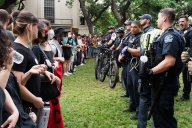You have /5 articles left.
Sign up for a free account or log in.
“Dramatically” fewer students on average sought treatment from their college counseling centers during the coronavirus pandemic compared to before the pandemic, according to the Center for Collegiate Mental Health, or CCMH, which published a new blog post Tuesday about students’ help-seeking behavior at 63 different colleges.
These college counseling centers served 32 percent fewer individual students during fall 2020 compared to fall 2019, the blog post said. The CCMH found that starting in March 2020, when campuses were largely shut down due to the pandemic, the centers experienced a drop in students seeking services, and a similar drop was recorded around August 2020, when many colleges limited their campus density and remained mostly or entirely virtual. The post emphasized that there was “significant variability” between institutions, and some saw an increase in demand rather than the average decrease.
The substantial decline in students served by the centers could be explained by the fact that many students were away from their colleges during the pandemic, and people tend to seek mental health treatment where they live, the post said. Though some counseling centers shifted to remote services, many students experienced barriers to accessing them, including a lack of private space to speak with a therapist and laws that prevent health-care providers from serving students in states where they are not licensed, the post said.
The CCMH findings contradicted early predictions that colleges would see a surge in students seeking support during fall 2020 as a result of their documented poor mental health outcomes, the post said. But “this trend is certainly not the result of diminished mental health concerns, student distress, or the lack of negative impacts on students,” it said.
“The fact that these students, living at home, sought mental health services from distant campuses at a lower rate makes sense,” the post said. “The decline in counseling center utilization directly parallels the reduction in residential living observed during Fall 2020, as most colleges and universities significantly reduced on-campus residential capacities in response to COVID-19 requirements for physical distancing.”
The number of appointments centers provided during fall 2020 was also 19 percent less than in fall 2019, the post said. However, the average number of attended appointments per student increased by 20 percent in fall 2020 compared to fall 2019, which suggests that students who did seek mental health support were requesting and attending more appointments than in previous years, the CCMH found. The post called this a “silver lining” during the pandemic.








